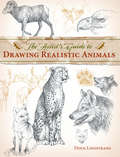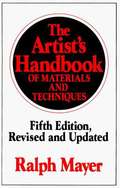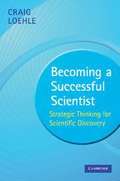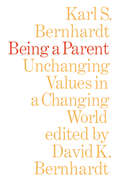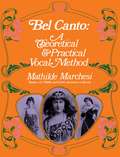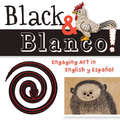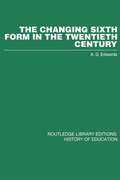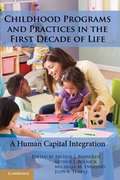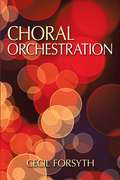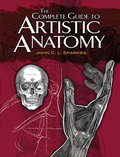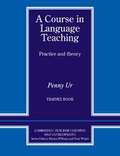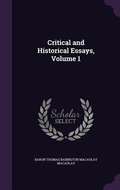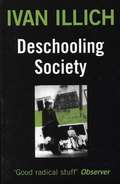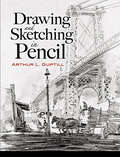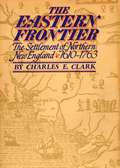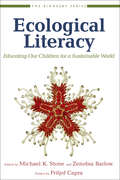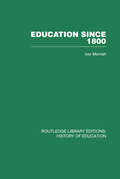- Table View
- List View
The Artist's Guide to Drawing Realistic Animals
by Doug LindstrandBreathe Life into Your Animal DrawingsWildlife artist Doug Lindstrand has spent 30+ years observing animals in nature and capturing them on paper. In this book, he distills his expertise into key lessons for drawing any animal in a charming, realistic style.Inside, a whole herd of step-by-step exercises and demonstrations (43, to be exact!) cover a broad range of subjects and challenges, including how to draw:short, long and patterned furmouths, eyes, ears and hornsvarious poses, including seated, standing and movinga diversity of animals, domestic and wild - from housecats to big cats, from tiny cottontails to massive African elephants.Nothing intimidating here! Starting with easy sketches, you'll learn to gradually refine basic shapes into lifelike dogs, wolves, deer, sheep, horses, bears, giraffes, owls, eagles, geese and other magnificent creatures. With this classic and time-tested approach, you'll be able to draw not only the animals illustrated on these pages, but any animal that touches your artistic soul.
The Artist's Handbook Of Materials And Techniques (Reference)
by Ralph MayerThe Artist's Handbook of Materials and Techniques is a reference book by Ralph Mayer (1895–1979). Intended by the author for use by professional artists, it deals mostly with the chemical and physical properties of traditional painterly materials such as oil, tempera, and encaustic, as well as solvents, varnishes, and painting mediums. It also has extensive coverage of ancillary activities such as stretching and preparing canvas, care and maintenance of tools, and conservation of older paintings. Originally published in 1940, the Handbook was referred to as "the painter's bible" at the time,[citation needed] and it continues to have a place on the reading list in American universities to this day. It underwent three extensive revisions in Mayer's lifetime, and the fifth posthumous edition is still in print. Ralph Mayer’s archives of writing and research on materials and techniques are now at the Ralph Mayer Learning Center, Yale University School of Art.
Bahurupi Gandhi
by Jitendra Desaiબહુરૂપી ગાંધી’એ બાળકોને ગમે તે રીતે ગાંધીજીની વિભૂતિ જુદા જુદા સ્વરૂપે રજૂ કરતું, માધ્યમિક શાળાનાં બાળકોને વાંચવું ગમે તેવું પુસ્તક છે. એનું અંગ્રેજી નામ પણ ‘બહુરૂપી ગાંધી’ છે. ‘બહુરૂપી’ શબ્દ આ અર્થમાં આપણે ત્યાં પ્રચલિત નથી, પણ મથાળું સૂચક હોવાથી ગુજરાતીમાં પણ તેમનું તેમ રાખ્યું છે.
Becoming a Successful Scientist
by Craig LoehleLoehle (principal scientist, National Council for Air and Stream Improvement, Inc.) provides practical advice applicable for students and researchers in all scientific disciplines on how to be successful in their fields. A sampling of topics includes: strategic creativity and problem solving, analysis and solutions, conducting a research program, ethics, publishing, the practice of scientific discovery, and the myth of objective science advice. Annotation ©2010 Book News, Inc. , Portland, OR (booknews.com)
Being a Parent: Unchanging Values in a Changing World
by David K. Bernhardt Karl S. BernhardtDuring his thirty years with the Institute of Child Study of the University of Toronto the late Dr. Karl S. Bernhardt wrote hundreds of articles and gave hundreds of talks to parents on the best way to bring up children. His philosophy is based on a belief in the worth of the individual. He believed that the goal of child-rearing should be to develop a feeling of security in the individual, and the best way to develop this sense of security is with firm and consistent discipline.This volume brings together some of Dr. Bernhardt's articles. It examines all aspects of child-rearing: the importance of the home and the family, and the influence on the child's development exerted by both the home and the school. He describes the stages of child development, discipline problems, character education, the use of leisure time and the development of mental health.Written in a style which is simple and direct, this book is a guide for family living with a timely message for today's parents.
Bel Canto: A Theoretical and Practical Vocal Method (Dover Books on Music)
by Mathilde MarchesiMathilde Marchesi (1821-1913) was probably the most renowned singing teacher of the late nineteenth century. Herself the pupil of the great Manuel Garcia the Second and the associate of the unsurpassable divas of the middle nineteenth century, she also linked the traditional bel canto teaching method to the beginning of the twentieth century. Early in her career her work was praised enthusiastically by Rossini, who was for a time officially in charge of voice training in France; and toward the end of her career she prepared such superstars as Melba, Calvé, Eames, Aida, and others.This volume embodies Madame Marchesi's "vocal alphabet," or basic instructions and exercises that formed the voices of her great pupils. An introductory text discusses breathing, attack, registers, and similar matters, while the remainder of the book contains many exercises that teach voice management and projections.Marchesi's book is today even more important than when it first appeared, for it offers the basis for a construction of the bel canto training system. At the time the book appeared, the bel canto system had gone out of fashion in favor of more modern schools that seemed to offer more rapid maturation, voice volume, and dramatics. Today, a more realistic reevaluation has revealed that the bel canto system gave the singer much longer performing life, a more pleasing voice, and far greater musical ability. As Philip Miller states in his introduction, "a solidity, a sure technical mastery, an even scale with no register break . . . strong, even and secure trills, their coloratura masterly." In addition, the resurgence of interest in early-nineteenth-century opera renders a work like Marchesi's indispensable to the modern singer.
Black and Blanco!
by San Antonio Museum of ArtWhat better way to be introduced to the contrasting interplay between black and white than with eye-catching works of art. This bi-lingual edition also introduces children at a young age to both English and Spanish.Art for this book was selected from the collection of the San Antonio Museum of Art, one of the leading art museums in the United States with a collection spanning a broad range of history and world cultures.
Campus Power Struggle
by Michael SherradenCampus Power Struggle traces the explosive evolution of the student political movement from the Berkeley Free Speech Movement of 1964 to armed confrontation at Cornell in 1969. From campus conflict as a microcosm of larger political struggles for self-determination, to student concern about infringements upon personal liberties, the studies in this book provide authoritative insight into unrest on American campuses. This volume represents sociology as the ""big news"" in its most impressive and involved style. No.l in the series.Contents: Introduction - The Struggle for Power on the Campus (Howard S. Becker). Beyond Berkeley (Joseph Gusfleld). Columbia: The Dynamics of a Student Revolution (Ellen Kay Tnmberger). The Crisis at San Francisco State (James McEvoy and Abraham Miller). Confrontation at Cornell (William H. Fried/and and Harry Edwards'). The Phantom Racist (Rita James Simon and James Carey). Dynamic Young Fogies-Rebels on the Right (Lawrence F. Schiff). Ending Campus Drug Incidents (Howard S. Becker). The Psychiatrist as Double Agent (Thomas Szasz). Student Power in Action (Arlie Hochschild).
The Changing Sixth Form in the Twentieth Century
by A D EdwardsOriginally published 1970.This book traces the history of the sixth form in Britain from the first decade of this century and follows the continuing debate over its function to the present day. It analyzes what kind of organisation is required to meet the demands of rising numbers and questions whether the needs of older adolescents can be better met in the "new" sixth form of the comprehensive school or in a separate type of sixth-form college. The book also discusses the balance between general and specialized courses.
Childhood Programs and Practices in the First Decade of Life
by Arthur J. Reynolds Arthur J. Rolnick Michelle M. Englund Judy A. TempleChildhood Programs and Practices in the First Decade of Life presents research findings on the effects of early childhood programs and practices in the first decade of life and their implications for policy development and reform. Leading scholars in the multidisciplinary field of human development and in early childhood learning discuss the effects and cost-effectiveness of the most influential model, state, and federally funded programs, policies, and practices. These include Head Start, Early Head Start, the WIC nutrition program, Nurse Family Partnership, and Perry Preschool as well as school reform strategies. This volume provides a unique multidisciplinary approach to understanding and improving interventions, practices, and policies to optimally foster human capital over the life course.
Choral Orchestration
by Cecil ForsythThis volume is geared toward organists seeking a brief, convenient guide to developing technical grounding for the scoring of compositions. Noted musicologist Cecil Forsyth takes readers bar by bar through a complete choral orchestration in this excellent and inexpensive tutorial. <p><p> Forsyth discusses general principles in terms of their application to everyday orchestral necessities. He further presents a complete composition and explores each note, forming a friendly critical conversation with readers. Together the author and reader examine the work's musical difficulties, balance the orchestral possibilities of each passage, and explore the details of orchestral execution. Pianists and composers as well as organists will appreciate this accessible and complete study of orchestration.
The Complete Guide to Artistic Anatomy (Dover Anatomy For Artists Ser.)
by John C.L. SparkesThis systematic presentation illustrates the depiction of bones and muscles, both in detailed close-ups and in larger groups. It starts by discussing the proportions of a human adult and proceeds to define the principal terms used in describing anatomy. Subsequent illustrations depict the skull, bones, muscles, veins, and other aspects of the human figure. In addition to captions, the images are complemented by extensive descriptions that explain bone and muscle placement and function. Nearly fifty finely executed full-page plates and numerous smaller drawings make this a rewarding browsing book as well as an excellent reference for artists.
A Course in Language Teaching
by Penny UrThis book provides all the task material, essential reading and worksheets from A Course in Language Teaching, but without background information, bibliographies, notes or solutions. The tasks, which focus on both practical and theoretical aspects, are designed to encourage critical reflection on key topics of language teaching. It is suitable for those studying on a trainer-led course, where the trainer is available to provide input, guidance and feedback.
Critical and Historical Essays -- Volume 1
by Baron Thomas Babington Macaulay MacaulayCritical and Historical Essays: Contributed to the Edinburgh Review (1843) is a collection of articles by Thomas Babington Macaulay, later Lord Macaulay. They have been acclaimed for their readability, but criticized for their inflexible attachment to the attitudes of the Whig school of history.
Deschooling Society
by Ivan IllichDeschooling Society is considered the author's best work. It's a collection of essays that bring out the nature of learning and requirements of modern schooling.
Drawing and Sketching in Pencil (Dover Art Instruction)
by Arthur L. GuptillThis classic guide offers clear, concise instruction in the basics as well as the finer points of pencil drawing. Appropriate for beginning and intermediate students, it features sixty-six well-chosen illustrations that encompass a wide range of subjects — mainly architectural, but also people, animals, and landscapes — and demonstrate a tremendous variety of techniques.An architect, painter, art director, and teacher, Arthur L. Guptill wrote several popular books on drawing. He begins this two-part treatment, aimed at architects, artists, and students, with discussions of drawing objects in outline and in light and shade, the principles of freehand perspective, methods of cast and life drawing, and sketching animals. The second part examines the choice of subjects and drawing in outline and in flat and graded tones. The important subject of composition receives considerable attention, with particular focus on unity and balance. Additional topics include working from photographs and from nature, the representation of buildings — including exteriors, interiors, and street scenes — and portraying details and accessories, from furniture, draperies, doors, and windows to clouds, water, and trees.
The Eastern Frontier: The Settlement Of Northern New England, 1610-1763
by Charles ClarkThis extremely readable account of early New England settlements emphasizes the development of a distinctive culture derived from the varied groups that settled there.
Ecological Literacy
by Fritjof Capra David W. Orr Zenobia Barlow Michael K. StoneReorienting the way human beings live on the earth and educating children to their highest capacities have much in common, say the thinkers and educators behind this groundbreaking book. Both endeavors must be viewed and pursued in the context of systems: familial, geographic, ecological, political. And our efforts to build sustainable communities cannot succeed unless future generations learn how to partner with natural systems to our mutual benefit. In other words, they must become "ecologically literate."The concept of "ecological literacy" advanced by this book's creators, the Center for Ecoliteracy in Berkeley, California, extends beyond the discipline of environmental education. It aims, as David W. Orr writes in his foreword, "toward a deeper transformation of the substance, process, and scope of education at all levels."The reports and essays gathered in the book reveal the remarkable work being conducted by the Center's extensive network of partners. In one middle school, for example, culinary icon Alice Waters founded a program that not only provides students with healthy meals but teaches them to garden-and thus to study life cycles and energy flows-as part of their curriculum. Other hands-on student projects supported by the Center and described in the book range from stream restoration and watershed exploration to confronting environmental justice issues at the neighborhood level.With contributions from distinguished writers and educators, such as Fritjof Capra, Wendell Berry, and Michael Ableman, Ecological Literacy marries theory and practice based on the best thinking about how the world actually works and how learning occurs. Parents and educators everywhere who are engaged in creative efforts to develop new curricula and improve children's ecological understanding will find this book to be an invaluable resource.
Education Since 1800 (Routledge Library Editions: History of Education #24)
by Ivor MorrishOriginally published in 1970, this volume provides a survey of the wide field of the development of education since 1800. The book is structured as follows: Part One: The General Development of Popular Education English Elementary Education, the Development of Primary Education, English Secondary Education Part Two: Specific Topics in Education Independent, Private and Public Schools, Technical and Technological Education, The Universities, Teacher Training, Further and Adult Education, The Youth Services Part Three: Educational Thinkers Johann Friedrich Herbart (1776-1841), Friedrich Froebel (1782-1852), Froebelianism and Montessori, John Dewey (1859-1952).
